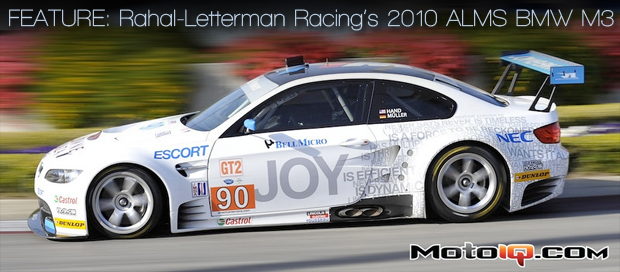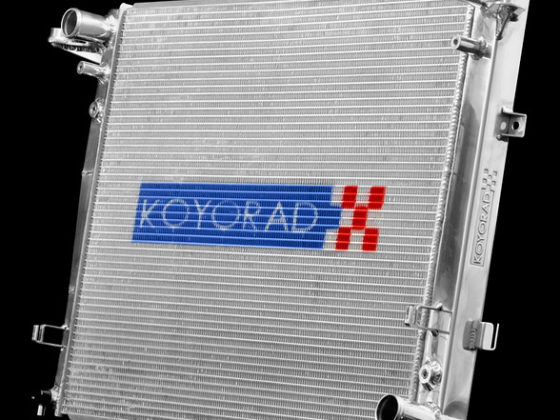,
 |
| The silver machined aluminum things are the inlet restrictors. The ID is 29.4mm, or smaller than the inside of your typical Honda Civic cold air intake! They are placed in a high pressure zone in the front of the car to try and squeeze every bit of air possible past them. Check out all of the lightweight dry carbon ducting. |

The engine is forced to breathe through two tiny 29.4mm restrictors by homologation rules. This is the main reason for the low sounding power numbers. Since the airflow to the engine is limited, the engine is redlined at a relatively low 8,600 rpm as there is simply not enough breathing to efficiently rev higher. The engine maintains the dual VANOS variable cam phasing of the intake and exhaust cams and the cams are more aggressive than stock. The heads intake ports are actually smaller than the stock M3’s to improve flow velocity and give a broader powerband. Due to the inlet restrictors, the larger stock ports would simply have stagnant flow, lack of bottom end power and throttle response. This is all the information that BMW was willing to share about the engine and we were not allowed close enough to deduce anything else. We assume that this engine probably has a very high compression ratio as this is a common trick for other forms of restricted inlet racing. We also assume that there are some interesting tricks going on with cam design, the variable cam timing and engine mapping to give more pumping induced pull against the restrictor–another common restricted inlet engine set of tricks.
 |
 |
| The engine compartment air management is amazing. Everything is done to increase downforce and minimize drag. The air from the lower part of the grill opening is fed by streamlined ducts through the engine coolant heat exchangers then out the top of the hood. The curved ducts supply air to the rear mounted heat exchangers for the engine oil, transaxle and air conditioning systems. The center grill ducts feed the engine and are designed to develop positive pressure before the inlet restrictors. Everything is dry carbon, even the wheelhouse liners! |
Lubrication is handled by a dry sump system. This allows a low profile oil pan and the engine is set lower and more rearward in the chassis for better weight distribution. The rules allow engine relocation as long as the engine isn’t set back farther than the stock firewall. Engine control is handled by BMW’s Power 400 motorsports engine management system. The ECU uses production car like CANBUS multiplexing protocol and smart sensors for engine control, one way telemetry and datalogging. The Power 400 controls the production drive by wire throttle body with driver selectable engine mapping and multi-mode traction control.
 |
 |
| The exhaust system is double-walled and recessed into the floor for aerodynamic reasons. With a sealed cockpit and a 32C max temperature dictated by the rules, thermal management of the exhaust is very important. The outer jacket of the exhaust is vented to the carbon fiber chimney which vents the air to a low pressure zone outside the car. This device has significantly reduced the system air conditioning load! |
The engine’s exhaust exits into 4-1 headers with a crossover pipe just past the down tubes. The exhaust is sunk into the floor for better aerodynamics and fits into a double wall oval section directly under the car. A unique feature is the double wall exhaust and heat chimney. Air is vented from under the car through the exhaust’s outer wall and exits up a carbon fiber chimney built into the cars A Pillar. This feature really cuts down cabin temperature, important because ALMS rules prohibit a cabin temperature of more than 32C or 90 degrees F.
 |
| Swirl pot gives a high bleeding point for the cooling system and help deaerate the coolant. All track cars need these. |


